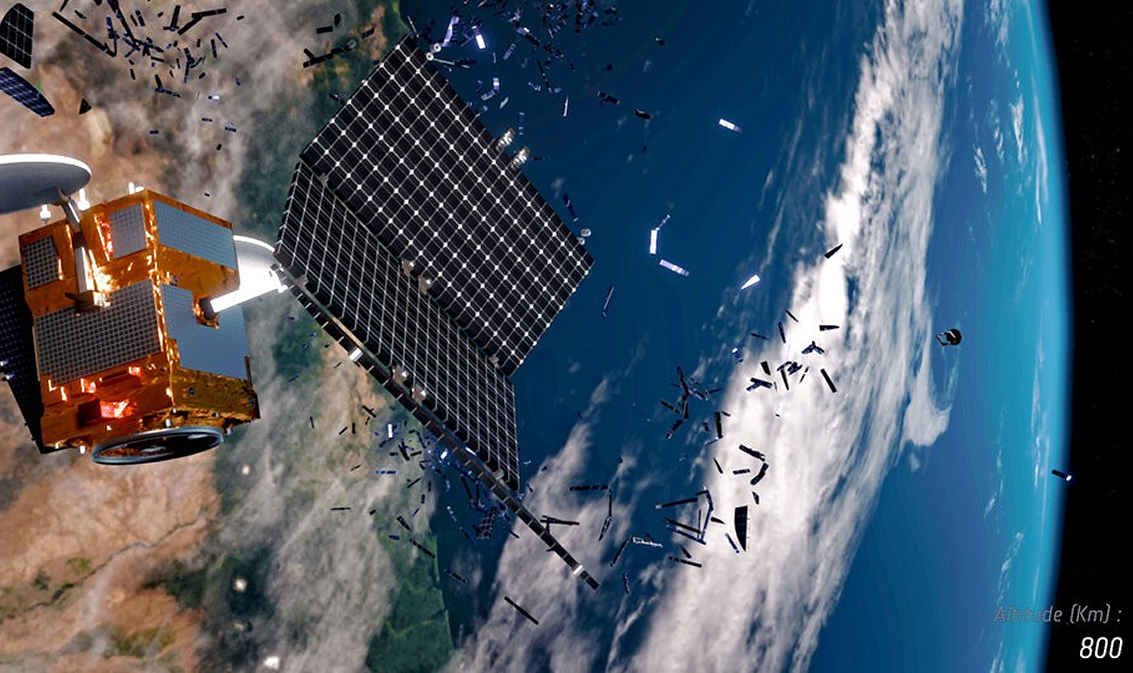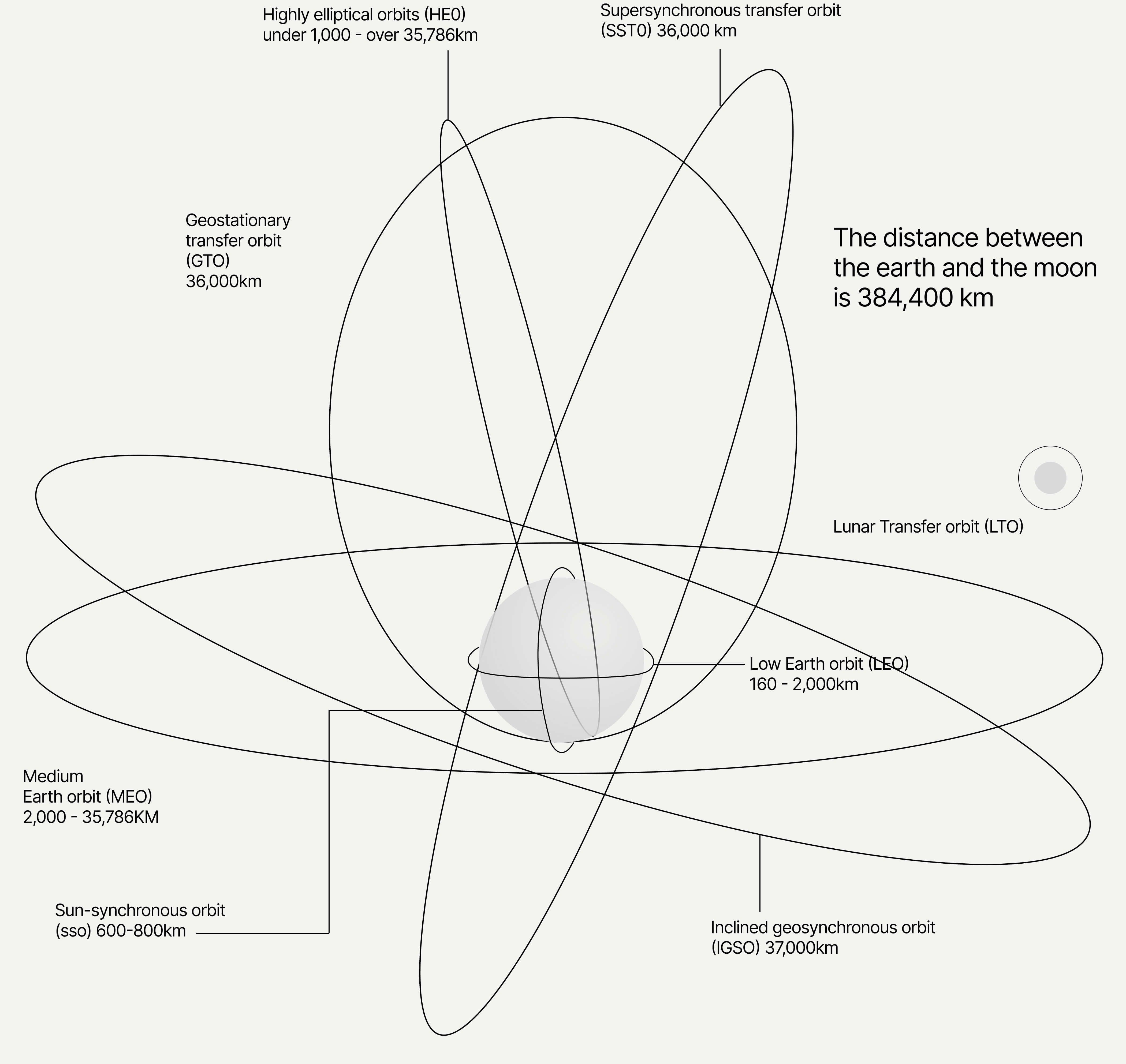

Sustainibility
Written by
Sandeep Ozarde
Written by
Sandeep Ozarde
Sustainibility
Glenn Peterson, a researcher at the Aerospace Corporation, calculated in an essay presented last October at the 69th International Astronautical Congress in Bremen the impact of the introduction of thousands of satellites for communication, monitoring and Earth observation into near-Earth orbit, where most of the space junk is located. When the mega-constellations start, he found, current tracking technology would generate 67,000 collision warnings. Satellite mega-constellations, consisting of hundreds or even thousands of spacecraft, have become a popular solution for global telecommunications coverage.
For example, satellite startup OneWeb plans to launch 900 small satellites into orbit to provide broadband Internet connections where they are currently unavailable. SpaceX has granted permission to scatter 12,000 satellites into low Earth orbit. SpaceX and Amazon plan to keep their ships within 360 miles of the line, but OneWeb's network could fly up to 750 miles (1,200 km).
Environmental issues on Earth. In late 2020, the Aerospace Corporation released a report called “Environmental Impacts of Satellites from Launch to Deorbit and the Green New Deal for the Space Enterprise,” expressing concern that when mega-constellations of satellites reach the end of their lives, they de-orbit and intentionally vaporise into particles in the atmosphere, creating what has been described as a complex zoo of chemicals that includes aluminium oxide.
In 2017, researchers were invited to Discovery to explore how collisions between mega-satellite constellations can be avoided, the end-of-life of spacecraft can be managed, and space debris minimised.
A mega-constellation, also known as a near-Earth satellite constellation, is our network of networked satellites orbiting Earth at altitudes of 2,000 km or less. They are designed to provide uninterrupted telecommunications over the Earth and bring services such as broadband Internet to remote areas.
Over the last decade, the cost of building and launching spacecraft has fallen, resulting in improved access to space without harmful effects. The industry trend towards mega-constellations of small, cheap and fuel-efficient satellites is the prime example. SpaceX launched the Starlink satellites in large series in 2019. SpaceX's ultimate goal is to create a mega-constellation of thousands of satellites, and it is not the only company that stands alone in its ambitions to conquer space.
Various commercial companies, including SpaceX, OneWeb, and Amazon, have signalled their ambition to deploy mega-constellations of thousands of small satellites in low Earth orbit to ensure affordable and reliable Internet access. I wonder why we need so many mega-constellations.

Credit: ESA/ Wikimedia commons
Space junk can remain in orbit for a long time, depending on its size, composition and altitude. The higher the altitude, the longer it will remain in Earth's orbit. With typical collision speeds of up to 10 km / s in orbit and depending on the size of the debris, collisions with space debris have the potential to damage or destroy functioning satellites and manned spacecraft, including the International Space Station, threaten astronauts’ safety, knock satellites off their orbit and threaten the functioning of satellites and accelerate the decay of operational satellites.
As near-Earth orbits are crowded with satellites in mega-constellations, it is becoming increasingly difficult to avoid collisions. In September 2019, the European Space Agency fired a booster at one of its satellites en route to another satellite, and the two collided. As low Earth orbits become increasingly congested, more collision avoidance manoeuvres and better communications are needed for satellite operators.
Operators of satellite mega-constellations need to consider ways of reducing debris caused by satellites and standard procedures to maintain sustainable use of near-Earth orbit. Current plans for 5G satellites will increase the number of impacts between satellites and optical, infrared and radio observations made from Earth and from Earth in space, thereby increasing the potential for Kessler Syndrome.

Credit: multimedia.scmp.com
The Hubble Space Telescope and a number of observatories, including the International Space Station, are in low Earth orbit, the altitude at which satellites fly. Geosynchronous satellites are 50 to 100 times further from a low Earth orbit than satellites, as shown above. You can see the actual surprise photobomb of the Starlink satellite 1619, which flew past the telescope within 80 kilometres and destroyed the observations of Dr. Simon Porter.
SpaceX will become the operator of the world's largest active satellite constellation with 180 satellites orbiting the planet. But this is just a starting point for Starlink, SpaceX's ambitious project to provide every inch of Earth with internet capacity. To maintain the kind of connectivity that SpaceX wants, the company will have the option to launch 42,000 satellites into space over the next decade.
The European Commission has announced plans to launch thousands of satellites into orbit around the Earth, adding to a growing list of planned mega-constellations that are yet to be launched into space. Although 42,000 satellites are 21 times more than operational satellites in space, the true impact of the world's largest active satellite constellation, the 180 satellites currently orbiting the planet, is still a mystery.
According to a public statement by the American Astronomical Society, mega-constellations have increased the number of orbital objects accumulated in space over the past sixty years to more than 15,000, five times faster than five years ago. Companies such as OneWeb, Amazon, SpaceX and others have announced plans to launch or test mega-constellations.
Reasons cited include the risk of catastrophic satellite collisions, cybersecurity concerns, and environmental and health concerns, including the impact on astronomical observations and the beauty of the night sky. Such concerns are likely to intensify as SpaceX and Amazon OneWeb expand their current fleet of satellites in low-Earth orbit and Amazon prepares to deploy more than 3,200 satellites for its Kuiper broadband project. Both companies say that their satellite mega-constellations will provide broadband Internet to billions of people around the world who are currently underserved or underserved, but that statement says nothing when weighed against the potential dangers.
China is planning its own constellation which is definitely going to compound the problem of crowding in LEO and signal interference, the rush to secure orbital slots is heating up. There are no international laws regarding satellite disposal, and ESA estimates non-compliance around disposal could be as high as 60% of launches. Poor adherence to End of Life protocols can also add to the issue of space junk.
While the UN tightly controls GEO orbits, offering countries licenses for a set number of slots in the closely-packed and highly valuable planes, there is no such limit at lower orbits.
References